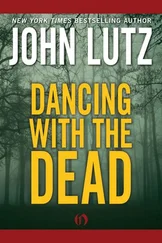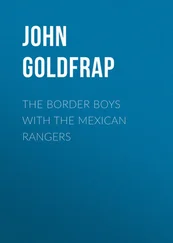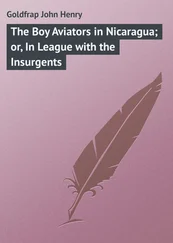John Wohlstetter - Sleepwalking with the Bomb
Здесь есть возможность читать онлайн «John Wohlstetter - Sleepwalking with the Bomb» весь текст электронной книги совершенно бесплатно (целиком полную версию без сокращений). В некоторых случаях можно слушать аудио, скачать через торрент в формате fb2 и присутствует краткое содержание. Город: Seattle, Год выпуска: 2012, ISBN: 2012, Издательство: Discovery Institute Press, Жанр: История, military, Политика, Публицистика, на английском языке. Описание произведения, (предисловие) а так же отзывы посетителей доступны на портале библиотеки ЛибКат.
- Название:Sleepwalking with the Bomb
- Автор:
- Издательство:Discovery Institute Press
- Жанр:
- Год:2012
- Город:Seattle
- ISBN:978-1-93659-906-6
- Рейтинг книги:3 / 5. Голосов: 1
-
Избранное:Добавить в избранное
- Отзывы:
-
Ваша оценка:
- 60
- 1
- 2
- 3
- 4
- 5
Sleepwalking with the Bomb: краткое содержание, описание и аннотация
Предлагаем к чтению аннотацию, описание, краткое содержание или предисловие (зависит от того, что написал сам автор книги «Sleepwalking with the Bomb»). Если вы не нашли необходимую информацию о книге — напишите в комментариях, мы постараемся отыскать её.
RICHARD PERLE, Resident Fellow, American Enterprise Institute and Assistant Secretary of Defense, 1981–1987 Sleepwalking with the Bomb
Sleepwalking with the Bomb — читать онлайн бесплатно полную книгу (весь текст) целиком
Ниже представлен текст книги, разбитый по страницам. Система сохранения места последней прочитанной страницы, позволяет с удобством читать онлайн бесплатно книгу «Sleepwalking with the Bomb», без необходимости каждый раз заново искать на чём Вы остановились. Поставьте закладку, и сможете в любой момент перейти на страницу, на которой закончили чтение.
Интервал:
Закладка:
The treaty prohibits the “testing, use, manufacture, production or acquisition by any means whatsoever of any nuclear weapons” and the “receipt, storage, installation, deployment and any form of possession of any nuclear weapons.” Cuba’s compliance is conditioned on reaching a satisfactory agreement with the U.S. over Guantanamo Bay—which makes its compliance essentially illusory. There is no prospect of the U.S. ceding Guantanamo any time soon, even if eventually all terror detainees are transferred elsewhere.
The United States, ever ardent for disarmament treaties, signed both protocols (supplemental agreements) to the Tlatelolco treaty. Protocol I requires outside powers retaining territories in the zone (U.S., UK, France, and the Netherlands) to adhere to the treaty and not bring nuclear weapons into the zone. Protocol II requires all declared nuclear weapons states to respect the nuclear-free status of the zone. It has been signed by all five Security Council nuclear powers (the five permanent members: U.S., UK, France, Russia, China). Israel, which is unlikely to import nuclear materials into the region, has not signed because it is not a declared nuclear power. India and Pakistan are not parties to nonproliferation treaties. [51] Argentina did not accede to the treaty until 1994, which meant that in the spring of 1982, during the Falklands War with Britain, the Argentines had no legal grounds to object to Britain’s using nuclear submarines or other nuclear-armed platforms during the conflict. On May 2, 1982, the UK nuclear submarine Conqueror sank the Argentine cruiser General Belgrano , causing the largest loss of life (323 of 993 on board) during the war. As Argentina still claims the Falkland Islands, located in the southern Atlantic Ocean about 300 miles off its eastern coast, in event of a future conflict Britain would be violating the Tlatelolco Protocols if it sent nuclear-powered, let alone, nuclear-armed, ships into the conflict. In February 2012 Britain sent a nuclear sub to the area; Argentina claimed this violated the protocols; Britain denied the charge but refused to reveal the sub’s location.
The Latin American equation could be radically altered by Venezuelan strongman Hugo Chavez—an aspiring Fidel Castro seeking to lead all Latin American countries in revolution against American influence in the region and against governments allied with the U.S.—provided he survives his bout with cancer. Chavez desires to send uranium ore to Iran for its nuclear program. Eventually, he might seek Iran’s aid in launching a nuclear weapons program for Venezuela, in violation of Tlatelolco’s nonproliferation norms. Assuredly Chavez would follow North Korea’s example of blithely ignoring signed agreements if they interfere with his plans.
Africa: Libya and South Africa
SINCE THE mid-1970s, Libyan dictator Muammar Qaddafi had a standing offer to purchase nuclear weapons from any seller. He was an eager supporter of terrorism against the West—worrying, among others, Reagan, who wrote in his diary in 1987, “Someone like Qaddafi could develop nuclear weapons and perhaps smuggle them into the United States.”
In 1986, Libyan terrorists had bombed a West German discotheque, killing a U.S. soldier and a Turkish woman and injuring over 120 (40 of them Americans). In response, Reagan ordered the bombing of Libyan barracks and airfields, just missing Qaddafi himself. Qaddafi answered that bombing by downing Pan Am flight 103 on December 21, 1988, days before the end of Reagan’s term of office. After these violent interchanges and sponsorship of terrorism worldwide, what made Libya decide to abandon its nascent nuclear program in 2003?
Though negotiations had been going on for years, and were tied to a settlement of Libyan liability for the Pan Am bombing, it seems clear that the factor uppermost in Qaddafi’s decision was fear that his country would be next after Iraq on the allied coalition target list. Libya committed to dismantling its WMD programs within days of America’s “shock and awe” air assault on Iraq in March 2003. As Dr. Johnson famously quipped, “Depend upon it, sir, when a man knows he is to be hanged in a fortnight, it concentrates his mind wonderfully.”
South Africa, on the other hand, already was a nuclear-weapon state when it voluntarily disarmed. It began a commercial nuclear program in the 1950s under Atoms for Peace, and by 1965 could produce enriched uranium for a bomb. South Africa’s military nuclear program began in 1974, following the Carnation Revolution in Portugal that brought decolonization—and with it, instability—to the region. With Marxist dictators seizing power in neighboring countries in the years following—in Mozambique and Zimbabwe (formerly Rhodesia)—South Africa had no incentive to disarm.
Also significant for South Africa’s nuclear weapons program was its relationship with Israel. After the 1973 Yom Kippur War, when Israel’s formerly warm relations with pro-Arab African nations came unglued, Israel turned to South Africa as its supplier of uranium ore, which it is unable to mine domestically. Israel reportedly traded its design expertise to enable the South Africans to build gun-type uranium A-bombs in return for uranium to make atomic bomb “primary” triggers for “secondary” hydrogen bombs.
Weapons designers Thomas Reed and Danny Stillman ( The Nuclear Express ) believe that Israel also wanted from South Africa a clandestine site to test a neutron bomb, presumably for use against Egyptian and Syrian tank assault in event of a repeat of their 1973 surprise attack. They note that it took China, a sophisticated nuclear-club member, five tests to get a working neutron bomb. They conclude that Israel tested a neutron bomb 1,500 miles southeast of Cape Town on September 22, 1979, to make it appear to outside observers as a South African test. The signals matched French weapons, but Israel, as noted earlier, obtained weapons expertise from France. [52] For more on the detective work that found Israel the likely candidate responsible for the test, see source notes at www.SleepwalkBomb.com . Reed and Stillman argue that the Carter administration—to avoid roiling the political climate in the Mideast after the Camp David Accords between Israel and Egypt were signed in 1978—whitewashed the 1979 nuclear test event and produced a finding of no nuclear test.
The Soviets were energetically backing Communist “liberation” movements in Africa, all of which South Africa adamantly opposed. Evidence of a South African nuclear test would have strengthened South Africa’s hand in supporting regional allies against Russia’s Marxist proxies. In 1976 the Soviets persuaded the U.S. to cooperate in pressuring South Africa not to conduct a nuclear test at its Valindaba site. (Reed and Stillman drily note that in Zulu the word means, “We do not talk about this at all.”) By 1978 Valindaba was producing enough highly enriched uranium to make one bomb per year, and when P. W. Botha succeeded John Vorster that year as prime minister, he pressed for more. In the 1980s South Africa produced six uranium gun-trigger devices. Needing no testing, these enabled South Africa to go nuclear without alerting the world and risking nonproliferation blowback.
By the mid-1980s the Cuban-backed Marxist rebels were making progress in the ex-Portuguese colony Angola—just north of the guerrillas fighting South African control of South West Africa (now Namibia). South Africa reportedly had contingency plans to use a uranium bomb on Luanda, the Angolan capital, in event of war.
In 1989 F. W. De Klerk became South African head of state, and oversaw the end of apartheid. In November 1989 he ordered Valindaba to be closed and his country’s half-dozen uranium bombs dismantled. By September 1991 the task was done. His apparent motivations were to end international isolation and to prevent nuclear weapons from falling under control of a black African leader. This despite the evident fact that the new South African leader, Nelson Mandela, was as unlikely as anyone on the planet to use nuclear weapons.
Читать дальшеИнтервал:
Закладка:
Похожие книги на «Sleepwalking with the Bomb»
Представляем Вашему вниманию похожие книги на «Sleepwalking with the Bomb» списком для выбора. Мы отобрали схожую по названию и смыслу литературу в надежде предоставить читателям больше вариантов отыскать новые, интересные, ещё непрочитанные произведения.
Обсуждение, отзывы о книге «Sleepwalking with the Bomb» и просто собственные мнения читателей. Оставьте ваши комментарии, напишите, что Вы думаете о произведении, его смысле или главных героях. Укажите что конкретно понравилось, а что нет, и почему Вы так считаете.












